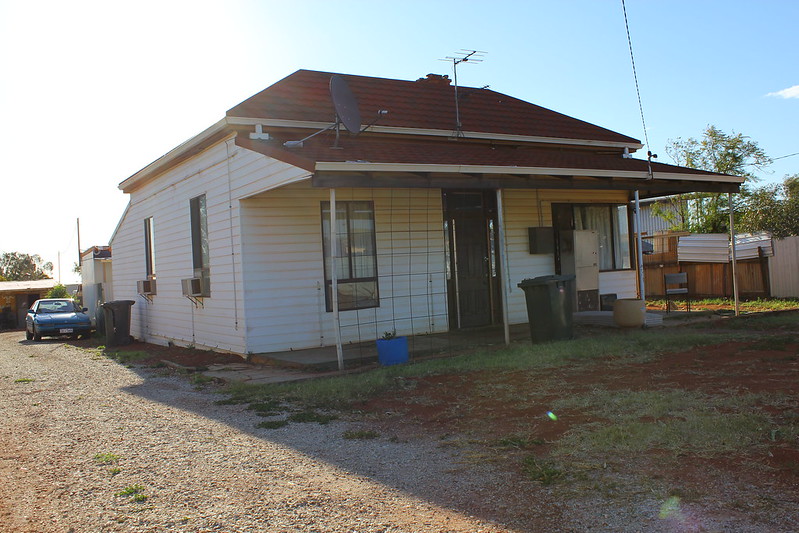
By Associate Professor Philip Oldfield, Head of School, Built Environment, UNSW. Originally published at The Guardian.
As winter sets in, and temperatures plummet, it can sometimes feel as cold inside as it does outside. The reason for this is the poor thermal performance of houses in Australia. Our homes need to be rapidly improved to combat climate change, tackle energy poverty and improve our everyday lives.
Minimum building standards for energy and comfort in Australian houses lag far behind many regions. Fifty years ago, it was the oil crises of the 1970s that triggered the creation of building energy standards across Europe and North America, and a widespread switch to double-glazing, increased insulation and concern for energy efficiency. In Australia, it wasn’t until the 1990s that minimum insulation requirements emerged. Only in 2003 did the Building Code of Australia set housing energy efficiency standards across the country.
The performance of our homes is governed by the nationwide house energy rating scheme (NatHERS for short). Ratings range from 0 stars, for a house that would provide no protection at all from the climate, to 10 stars, where virtually no artificial heating or cooling is needed all year round. The current minimum performance for new homes is 6 stars, which has been in place since 2011. However, the average Australian home sits at just 1.8 stars. This is perhaps closer to a tent than a modern eco-house.
Australian housing then leaves a lot to be desired in terms of comfort and energy. Single-glazing is still typical, whereas in Sweden double-glazing has been required by building codes since 1960, with triple-glazing now the norm in many colder climates. Australian homes are leaky too. Older houses can have an “airtightness” of more than 30 changes an hour – that is, all the air inside them will leak out 30 times every hour at 50 pascals of pressure. In newer homes it’s closer to 10-15 air changes. In comparison a high performance “Passivhaus” benefits from 0.6 or fewer air changes per hour. For many of us, we are paying thousands of dollars a year to heat our homes, only for this heat to escape straight through gaps in the walls.
What’s the impact of this? Sky-high bills for starters. Estimates in 2015 suggest about 28% of Australian households suffer from some form of fuel poverty – that is they either struggle to pay energy bills, or restrict energy use to the detriment of their health to keep them affordable. While spiralling energy prices are the driver, leaky uninsulated homes can magnify the effects. Take a 180 sq metres home in Canberra. If this received a 2-star NatHERS rating it would need 27,349kWh’s of electricity. If we assume $0.20/kWh, the cost would be $5,470 per year. A 6-star home would require 8,249kWh and cost $1,650, while a 10-star home would need only 100 kWh, costing a mere $20 a year.
The most vulnerable feel the effects most acutely. Research by UNSW found indoor temperatures in social housing as low as 5C in the winter and as high as 39.8C in the summer. The health impacts of this extend beyond being uncomfortable, with cold homes linked to increased blood pressure, asthma, poor mental health, respiratory and cardiovascular disease.
There are two solutions to this crisis. Firstly, we need to significantly tighten our building regulations. Why is this important? We know that over three-quarters of new houses are built to just minimum performance requirements – few go above this. The good news is Australian regulations will increase minimum performance from 6 stars to 7 stars from September. While this is a start, we will still be behind the EU, where all new buildings are required to meet nearly zero energy performance – these are buildings that require very low amounts of energy.
Arguably though, improving our new homes is the easy part. The second solution is we need to radically retrofit our existing buildings.
There are some DIY options – insulating roof spaces, sealing gaps around windows, etc. But for significant energy savings, we need to undertake “deep retrofits” – that is the systematic improvement of walls, roof, floor and windows while simultaneously installing highly efficient heating and cooling systems. This can require extensive work and subsequent expense. The recent retrofit of the Little Loft House in Canberra increased energy efficiency from 3.8 stars to 7.7 stars, for a cost of $400,000.
To achieve this at a national scale would require significant government backing, with a focus on the most vulnerable first – social housing, disabled people, elderly people. Perhaps we can look to Italy, where the recent 110% superbonus scheme allows homeowners a tax credit of up to 110% of the cost of retrofitting their dwelling.
There’s no place like home, at least as the saying goes. But if that home is cold, mouldy, expensive to heat and unhealthy, it can also be an incredible source of stress, discomfort and cost. We have an opportunity to improve this by tightening our building regulations and comprehensively refurbishing existing houses. We’ve been behind much of the world for far too long.

No Comments so far ↓
There are no comments yet...Kick things off by filling out the form below.